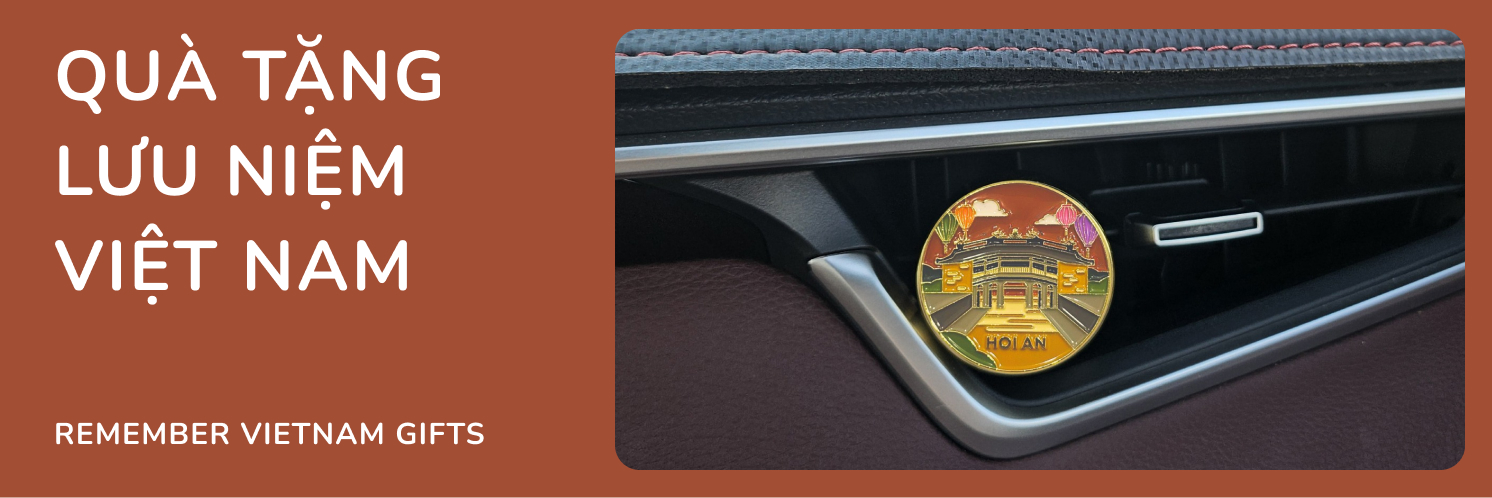- May 20, 2025
The Expat's Guide to Bringing Vietnamese Fish Sauce Home: Regulations, Packing & Tips
- Why Fish Sauce Makes the Perfect Vietnamese Souvenir
- Can You Bring Fish Sauce Back to Your Home Country?
- Airline Regulations for Fish Sauce Transportation
- Country-Specific Customs Regulations
- Expert Packing Techniques for Fish Sauce
- Practical Advice for Expats Bringing Fish Sauce Home
- Alternative Options for Expats
- FAQ for Expats Taking Fish Sauce Home
- Conclusion
For expats living in Vietnam, few souvenirs capture the essence of your time here better than a bottle of premium fish sauce. This "liquid gold" isn't just a condiment—it's the soul of Vietnamese cuisine that can instantly transport you back to vibrant street food stalls and memorable home-cooked meals.
But when it's time to visit home or send gifts to friends and family abroad, how exactly do you navigate taking fish sauce with you? This comprehensive guide explains airline policies, customs regulations, and packing techniques to help you successfully share this authentic taste of Vietnam with loved ones.
Why Fish Sauce Makes the Perfect Vietnamese Souvenir
As an expat in Vietnam, you've likely discovered that fish sauce (nước mắm) is the secret ingredient that gives Vietnamese cuisine its distinctive umami depth. This fermented condiment made from anchovies and salt has been produced in coastal Vietnamese villages for centuries.
Beyond its culinary importance, a bottle of high-quality fish sauce from Phu Quoc or Phan Thiet represents a thoughtful gift that food-loving friends and family will appreciate far more than typical tourist trinkets. It's authentic, practical, and offers a genuine taste of your Vietnamese experience.
While commercially produced fish sauce is available in many international cities, nothing compares to bringing home a premium bottle sourced directly from Vietnam. However, transporting this aromatic liquid requires some planning.
"Nước mắm" - a truly Vietnamese gift for your family and friends back home. Photo: Nước Mắm Tĩn
Can You Bring Fish Sauce Back to Your Home Country?
Yes, but with important conditions that vary by destination country and airline.
Fish sauce is classified as a liquid food product with a distinctive aroma, so transportation must comply with specific regulations. The two main considerations are:
-
Airline restrictions: You cannot carry fish sauce in cabin luggage; it must be checked.
-
Destination country food import regulations: Each country has different rules about bringing in seafood-derived products.
Understanding both sets of rules is essential before packing that precious bottle.
Airline Regulations for Fish Sauce Transportation
Vietnamese Airlines' Policies
Most Vietnamese carriers have established specific protocols for fish sauce transportation:
Vietnam Airlines:
-
Only permitted as checked baggage
-
Maximum 4 liters per passenger
-
Each bottle limited to 1 liter
-
Must use plastic bottles (glass prohibited)
-
Fill to maximum 95% capacity
-
Pack in styrofoam boxes with secure tape sealing
-
Not permitted on ATR72 aircraft
VietJet Air:
-
Only permitted on Phu Quoc routes
-
Must be packed in sealed styrofoam containers
-
No odor leakage or liquid spillage permitted

To take fish sauce on a plane, it needs to be packed in a styrofoam box and sealed tightly. Photo: Tuoi Tre Newspaper.
International Airlines' Policies
When returning home on international carriers, regulations tend to be stricter:
-
Many airlines completely prohibit fish sauce transportation
-
Others permit limited quantities (typically under 2 liters) with specialized packaging
-
Fish sauce must always be isolated from other packed items
-
Some carriers charge additional fees for strong-smelling items
Pro Tip for Expats: Always contact your specific airline at least 48 hours before your flight to confirm their current fish sauce policy. Regulations change frequently, and airline staff at check-in may have different interpretations of the rules.
Country-Specific Customs Regulations
The ease of bringing fish sauce through customs varies dramatically by region. Here's what expats need to know about major destination regions:
Asia
For expats returning to Asian countries, regulations are generally accommodating:
-
Japan & South Korea: Allow small quantities (under 1 liter) for personal use with proper declaration
-
Singapore & Malaysia: Relatively lenient with commercially-produced fish sauce
-
China & Taiwan: Permit properly packaged and declared commercial fish sauce
>>>>> You might also be interested in: Perfect Vietnamese Gifts for Koreans Living in Vietnam: What to Bring Back Home
Europe
EU countries have standardized but strict food import regulations:
- Factory-produced fish sauce with clear labeling and intact seals is typically permitted
- Quantities generally limited to 1-2 liters per person for personal use
- Customs declaration is mandatory
- Products must have clear ingredient listings in an EU language

All the fish sauce from Chus has clear labels and secure packaging so you can transport it easily. Photo: Nước mắm Hoàng Gia
North America
United States:
- Commercial fish sauce with complete labeling is permitted
- Must be factory-sealed with no leakage
- Mandatory declaration on customs forms
- Subject to random inspection by CBP agents
Canada:
- Similar to US regulations but sometimes more strictly enforced
- Limited to reasonable quantities for personal consumption
Australia and New Zealand
These countries maintain the world's strictest biosecurity measures:
- Commercial labeling with complete ingredient list required
- Mandatory declaration on arrival
- High likelihood of inspection
- Products that don't meet standards will be confiscated without compensation
Expat Insight: Many long-term expats report that Asian-Pacific countries tend to be more familiar with fish sauce and therefore less likely to confiscate it, while Western countries sometimes have customs agents unfamiliar with the product.
Expert Packing Techniques for Fish Sauce
Follow these specific steps to ensure your fish sauce survives the journey:
1. Select premium products:
- Choose high-quality brands like Nước Mắm Tĩn, Nước mắm Hoàng Gia
- These have proper seals, clear labeling, and better packaging
- First-press (cốt) varieties have stronger flavor, meaning you can bring smaller quantities
2. Bottle selection and preparation:
- Transfer to heavy-duty PET plastic bottles if original packaging isn't suitable
- Never use glass bottles due to pressure changes in aircraft cargo holds
- Leave 5-10% headspace at the top of each bottle
- Secure caps with waterproof tape in a clockwise direction
3. Primary containment:
- Place each bottle in a double-sealed ziplock bag
- Press out all air before sealing
- Use high-quality freezer bags rather than standard food storage bags
4. Secondary containment:
- Place bagged bottles in a leak-proof container with secure lid
- Line with absorbent material like paper towels
- Separate bottles with cushioning material
- Use commercial travel bottle protectors when possible
5. External packaging:
- Place contained bottles in center of your checked luggage
- Surround with soft clothing items
- Keep away from luggage edges to prevent impact damage
- Add "Fragile" stickers to exterior of luggage
Expat Pro Tip: Many experienced Vietnam expats recommend using specialized wine bottle protectors or neoprene bottle sleeves designed for travelers as an extra layer of protection.
Practical Advice for Expats Bringing Fish Sauce Home
After years of helping expats transport Vietnamese specialties abroad, here are our most valuable tips:
-
Choose the right varieties: For newcomers to fish sauce, select premium "cốt" varieties with balanced flavor profiles rather than the most pungent types. Brands like Nước Mắm Tĩn are excellent gateway options.
-
Timing matters: Purchase fish sauce as close to your departure date as possible to minimize storage issues. You could order at chus.vn for convenience and fast delivery.
-
Declare honestly: Always declare fish sauce on customs forms using proper terminology: "commercially produced fish sauce" rather than vague descriptions like "sauce" or "liquid."
-
Know your audience: Consider who will receive your gift. While Vietnamese friends abroad will appreciate traditional varieties, family members new to Vietnamese cuisine might prefer gentler introductions like fish sauce mixed with lime and chili.
-
Quantity considerations: A little premium fish sauce goes a long way. For a three-month supply of regular use, 500ml is typically sufficient.
-
Be prepared for questions: Some customs officials may be unfamiliar with fish sauce. Be ready to explain what it is (fermented anchovy sauce used as a condiment) and its commercial nature.
Alternative Options for Expats
If bringing liquid fish sauce proves too challenging for your specific situation:
-
International shipping services: Companies like Vietship and VietBuy specialize in sending Vietnamese products abroad with proper customs documentation.
-
Powdered alternatives: Several companies now produce powdered fish sauce specifically designed for international travelers that can be reconstituted upon arrival.
-
Vietnamese grocery networks: Research Vietnamese markets in your home city before departure. Many major international cities have specialty shops with imported Vietnamese products.
-
Fish sauce gift sets: Several premium Vietnamese brands offer special "travel editions" with airline-friendly packaging and proper documentation designed specifically for international gifting.
- Alternative Vietnam-themed gifts: Consider shelf-stable alternatives like Vietnamese coffee, premium tea, packaged dried fruits, or handcrafted items that encounter fewer customs restrictions.
Chus offers a diverse range of Vietnamese souvenirs for you to bring back home or give as gifts to family and friends.
>>>>> Read more: 15+ Vietnamese gifts to take home your friends will love
FAQ for Expats Taking Fish Sauce Home
1. Will fish sauce leak or smell in my luggage?
With proper packaging as outlined above, neither should occur. The multiple layers of containment prevent both issues.
2. How much fish sauce can I reasonably bring for personal use?
Most customs authorities consider 1-2 liters reasonable for personal use. Anything beyond 4-5 liters may raise questions about commercial intent.
3. Should I choose fish sauce from a particular region of Vietnam?
Each region produces distinctive varieties. Phu Quoc fish sauce has protected designation of origin status and is internationally recognized for its quality. Phan Thiet offers excellent alternatives, while Cat Hai varieties are increasingly popular among connoisseurs.
4. Can I mail fish sauce rather than take it on a plane?
Yes, but international shipping of food products requires specific documentation and specialized packaging. Services like Vietship specialize in this but charge premium rates.
5. How long will fish sauce remain good after I bring it home?
Properly sealed commercial fish sauce remains good for 2-3 years when stored in a cool, dark place. Some premium varieties actually improve with age, similar to fine wine.
6. What should I do if customs tries to confiscate my fish sauce?
Remain polite and provide any commercial documentation. If confiscation seems likely, some countries offer the option to abandon the item without penalty rather than face fines.
Conclusion
As an expat in Vietnam, sharing authentic fish sauce with friends and family back home offers them a genuine taste of your experience here. With proper planning, packaging, and knowledge of regulations, you can successfully transport this Vietnamese culinary treasure internationally.
Remember that regulations change frequently, so always verify current rules before your trip. While the process may seem daunting, the joy of sharing Vietnam's liquid gold with loved ones makes the effort worthwhile.
Beyond fish sauce, consider exploring other distinctive Vietnamese products from trusted suppliers like Chus.vn, which offers premium Vietnamese specialties and carefully packaged souvenirs specifically designed for international transport.
Note: Information updated as of May 2025. Always check with airlines and customs authorities before traveling, as regulations change frequently.





















